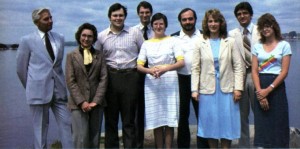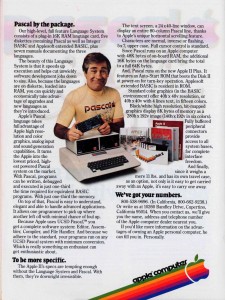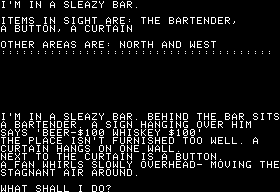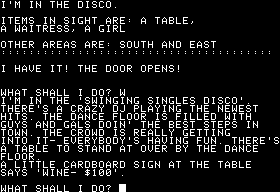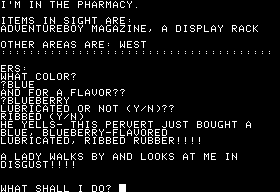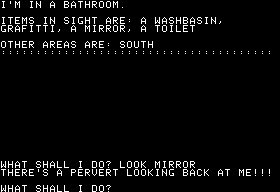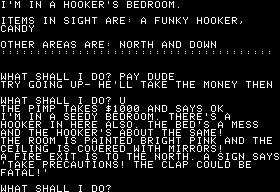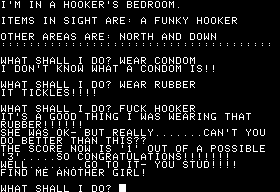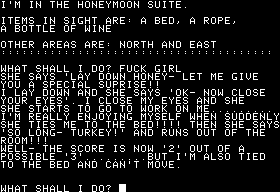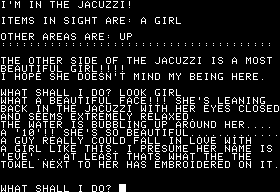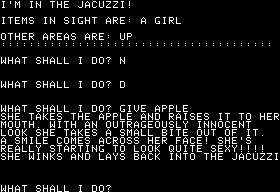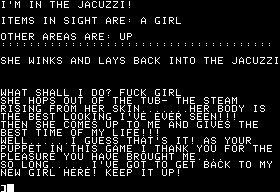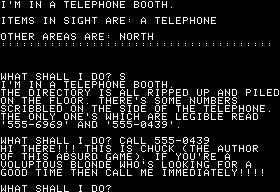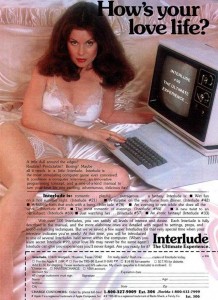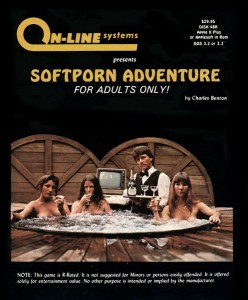The story of Sir-tech, the software publisher that brought the Wizardry franchise to the world, is inseparable from the story of the family that founded it. To properly trace the company’s roots, we have to go to a time and place far removed from the dawning American microcomputer industry: to Czechoslovakia during the interwar period. Appropriately enough, a castle figures prominently.
Czechoslovakia was patched together from scraps of the Austro-Hungarian Empire at the end of World War I. Composed of three separate and not always friendly ethnolinguistic groups — Czechs, Slovaks, and Germans — the new country had a somewhat fractious start. Within a few years, however, things stabilized nicely, and there followed an all-too-brief happy time in the country’s short and generally vexed history. Having inherited much of the old Austro-Hungarian Empire’s industrial heartland and being possessed of an unusually well-educated population, Czechoslovakia became one of the top ten economies in the world. With business booming, a prosperous populace eager to buy homes, and a burgeoning national reputation for innovative architecture, it was a good time to be a talented and industrious Czech builder. That’s exactly what Bedrich Sirotek was, and he prospered accordingly.
The good times ended for Czechoslovakia in 1938 with the Munich Agreement, in which the country’s alleged allies conspired with Nazi Germany to strip it of its border defenses, of 3.5 million of its citizens, of many of its most valuable natural resources, and of its dignity as a sovereign nation. Sirotek was as proud a Czech as anyone, but he was also a pragmatic businessman. The uncertainty — in some sectors, verging on panic — that followed the loss of the Sudetenland led to a drastic decline in property values. Sirotek started methodically buying up land, hedging against the time when peace and prosperity would return again. Sadly, that would be a long, long time in coming for Czechoslovakia.
One of the properties Sirotek bought was special: a 12th-century Romanesque castle in the village of Stráž nad Nežárkou. It had sat empty for almost a decade following the death of its previous owner, the ill-starred opera diva Emmy Destinn, who in her time had sung with the likes of Enrico Caruso. Decrepit as it was, Sirotek envisioned the castle as the perfect seat of the business dynasty he was building. He moved in right away with his wife, son, and daughter, and started making renovation plans. But within weeks the Germans arrived to gobble up the rest of the helpless country. Sirotek’s son, Bedrich Jr., describes the scene:
“Aside from a garage door falling on me when I was 7 in Smichov, my first real memory is as a 9-year-old boy on March 15, 1939. My sister Miluska and I started out to school, but the streetcars weren’t running and there were strange-looking guys in strange-looking uniforms and strange-looking vehicles driving on the wrong side of the street. [Prewar Czechoslovakia used to have British-style left-hand driving until it became a “protectorate” of right-driving Nazi Germany.] So we went home and found my father listening to the radio. And he took us both aside and said: ‘Now hear this. The Germans have arrived. From here on out, nothing you hear in the family gets repeated.'”
Sirotek’s family continued living in the castle, which he strove to make as livable as he could given the privations of life under the Nazis. Sirotek himself, however, spent much of his time in Prague, where he became heavily involved with the resistance. On several occasions the Gestapo seemed on to him and the game seemed to be up, but, unlike virtually all of Czechoslovakia’s Jewish population, Sirotek was lucky. He survived to see the country liberated by the Soviets.
For a time it looked like Czechoslovakia might be allowed to become again the happy, prosperous little country it had been before the war, as the Soviets stepped back and allowed the people to conduct elections and form a new republic. Sirotek returned to his business interests with gusto, and finally began the extensive renovations of the family castle he had been planning to do so many years before. Bedrich Jr. names his happiest memory there as his sister’s wedding on New Year’s Eve, 1947, when he was 17. But less than two months later, the Czech Communist Party, with the encouragement and support of the Soviets, executed a coup d’état to seize absolute control of the country. Sirotek, well known for his opposition to the Communists, was in danger once again. I’ll let Bedrich Jr. tell the rest of the story, which reads like an episode from a John Le Carré novel:
One weekend soon after the commies seized power, my dad got a call from his bank manager, who’d joined the party to protect himself – and, I guess, his clients. He said: ‘Mr. Sirotek, I’d advise you to leave before dawn on Monday because that’s when they’re coming to pick you up.’ So we loaded up our Tatra and headed out to Frantiskovy Lazne, the spa nearest the West German border. My dad still had contacts from his underground days and had been negotiating with a people-smuggler even before he got the warning.
“We checked into a good hotel and, a day or two later, my mother and father and sister and I got our marching orders to go to a station nearer the frontier; my sister’s husband was already in Geneva on business.
“The smuggler wasn’t there to meet our train. It was market day, so my mother and sister just melted into the crowd of women going to shop. But my father and I stood out like sore thumbs in that closely watched station, so some cops took us in to meet the chief of police himself.
“The chief asked what we were there for, and my father said we wanted to look at the local carpet factory. But he advised us it had been closed for several years. Now he asked if we had any weapons. My father reached into his pocket and came up with a .45-caliber revolver. The chief emptied the bullets and pocketed them. Then he asked my father if he had a permit. Dad produced one.
“The chief was very polite. ‘But, Mr. Sirotek,’ he said. ‘This permit is for a .38, not a .45. Do you happen to have the .38 with you?’
“My father reached into his other pocket and produced the .38. I thought for sure we would leave that room only in handcuffs. But the chief then called our hotel to verify whether we were registered there and had we checked out? We hadn’t – and the manager told him, wrongly, that my mother and sister were still there. So the chief said: ‘Mr. Sirotek, I’m going to keep your weapons. There’s a train back to your family in an hour and I want you both to be on it.’
“We said we would and then headed for the town pub, where my mother and sister and the smuggler were waiting and worrying. By train time, we were hiding in an unused chicken coop, waiting for darkness. It was right on the Iron Curtain; we could hear the guards talking and sometimes there were gunshots. But that night we walked out of the lion’s cage and clear of the zoo.”
The Sirotek family arrived in Canada with little more than the proverbial clothes on their backs; their entire fortune, castle included, was left to the Communists back in Czechoslovakia. Undaunted, Sirotek started over. Both he and his son changed their first names to the more English-friendly Frederick, and by 1951 they had formed their own home-building business. Once again they were on hand for a great economic moment, the prosperity of the 1950s in which a generation of ex-soldiers found good jobs, married, and started buying houses. The company moved on from home-building to gas stations to major commercial projects all over eastern Canada and the northeastern United States, including such prestige projects as a wind tunnel for Ottawa Airport and a linear accelerator and ion lab for the Canadian National Research Council. Frederick Jr., now married and with three children of his own, took over complete control of the family’s numerous business concerns after his father died in 1974.
Those concerns had by this point diversified far beyond construction. The family had, for example, for many years owned a factory manufacturing those little souvenir spoons sold in gift shops. During the mid-1970s, Sirotek became aware of a small industrial-resin manufacturer in Ogdensburg, New York, looking for an outside partner to invest. The owner of the company was a woman named Janice Woodhead, a British émigré to the United States by way of Canada. The husband with whom she had founded the business had recently died, and she needed a partner to continue. Sirotek, who saw an opportunity to acquire the resin his spoon-factory needed at a much cheaper price, signed on.
The partnership eased one link in his chain of supply, but there was still a problem further up the line. The base of the resin manufactured by Woodhead’s company was ordinary sand. That might seem a cheap and plentiful commodity, but this wasn’t generally the case. Prices for the stuff kept changing from week to week, largely in response to changing railroad-shipping rates. Every time that happened, Woodhead would have to recalculate by hand manufacturing costs and pricing. Sirotek didn’t really know anything about computers, but he did know enough to wonder aloud one day whether it might not be possible to program one to do all of this for them, and to do it much more quickly.
As it happened, Janice had a son named Robert who knew a thing or two about computers. Robert was attending Cornell University, allegedly majoring in psychology, but making very slow progress. The reason: Janice had been unwise enough to send Robert to a university on the PLATO network. Like an alarming number of other students, Robert became totally and helplessly addicted, cutting classes and neglecting his assignments in favor of endless hours of online socializing, games, and hacking. As he later said, “PLATO was like crack for computer nerds.” To make the situation even worse, Robert had recently acquired another dangerously addictive device: a TRS-80. Robert had already begun an alternate career in computers, working in a Computerland, programming business applications on contract, even making programs for his own university’s School of Hotel Administration.
At Janice’s suggestion, Sirotek talked to Robert about their problem. Robert’s programming resume and immediately positive response impressed him enough that Sirotek went out and paid $7000 for a top-of-the-line Apple II system to be shared by the two companies. Robert made the program as promised. As a bonus, he also implemented a mailing-list database to help the spoon manufacturer stay in contact with its suppliers and distributors. Wonderful, money well spent, time to move on, etc. Except now the wheels were beginning to turn in Sirotek’s head. His family hadn’t gotten to where it was without a keen business instinct and a nose for opportunity. Certainly lots of other businesses must have similar software needs, and Robert was a smart, personable kid he felt happy to help. As an experiment, they polished up the in-house mailing-list program, named it Info-Tree, and put some packaging together. They agreed that Robert would take the $7000 Apple II system along with the program to the Trenton Computer Festival of April 1979. (The keynote that year was delivered by Wayne Green, and had the perfect theme: “Remarkable Opportunities for Hobbyists.”)
But there was a problem: Sirotek wasn’t willing to ship his expensive computer by air, and Robert didn’t drive. Sirotek therefore decided to ask one of his sons, Norman, if he would be willing to drive Robert out to New Jersey for the show. At the time, Norman was having a bit of trouble deciding what he wanted for his life. After high school he’d enrolled in a business-management program at Clarkson College, only to decide it wasn’t for him after two years. He’d tried engineering for a time, but dropped out of that program as well. Recently he’d been managing construction jobs for his father’s companies while taking some engineering-drafting courses on the side. Norman had no particular interest in computers, and wasn’t thrilled about spending a weekend at a trade show for the things. However, his father was able to convince him by mentioning that Trenton was very close to the casinos and nightlife of Atlantic City.
Norman did spend some time that weekend in Atlantic City, but he also spent much more time than expected with Robert at the show. In fact, he was fascinated by what he saw there. On the drive home, he proposed to Robert that they officially go into the software business together: he would market the programs using his family’s wealth and connections, and Robert would write them. “Siro-tech” Software was born. The proposal came at a perfect time for Robert, who had just been suspended from university for a full year due to his poor grades.
The senior Sirotek officially took the role of president of the new company, but was happy to largely let the young men run with their ideas on their own, figuring the venture would if nothing else make a good learning experience:
“It was a good starter for the boys, learning from the ground up,” Fred Sirotek observes. “Neither Robert Woodhead nor Norman had too much business experience. I guess they both had some credits from the university on the subject, but in terms of hands-on experience they didn’t have any. So Norman would come to me for help — you know, ‘What do I do with this, Dad?’ I’d either produce a suggestion or direct him to what he needed.”
Robert and Norman had a long discussion about what they should do for their second product, after Info-Tree. Robert told Norman that — as if it hadn’t been obvious from the software on display at the show — games were hot. And they certainly sounded a lot more fun to write and market than business software. Norman was not, however, initially thrilled with the idea of selling games:
“I remember late one evening telling Bob Woodhead to forget the new game and put his efforts into something worthwhile, like a business package. I said nobody needs or wants the game. Bob looked straight at me and said I was wrong and went back to work.”
And so, over Norman’s mild objections, the die was cast. Siro-tech would try to make its name as a games publisher.
One of the most popular games on PLATO at the time (and one of the system’s legendary titles even today) was a space wargame called Empire. It’s a game we’ve brushed up against before on this blog: Silas Warner helped its designer, John Daleske, with its early development, and later developed a variant of his own. Robert believed it would be possible to write a somewhat stripped-down version of the game for the Apple II. Progress was slow at first, but after a few months Robert bought the brand-new Apple Pascal and fell in love with it. He designed and programmed Galactic Attack in Pascal during the latter half of 1979. Demonstrating that blissful ignorance of copyright that marked the early software industry, he not only swiped the design pretty much whole-cloth from Daleske but made his alien enemies the Kzinti, a warlike race from Larry Niven’s Known Space books.
The game was complete, but now the would-be company had a problem, a big one: they had no way to release it. Apple had promised upon the release of Apple Pascal that a “run-time system” — a way to allow ordinary Apple IIs without the Apple Pascal software or the language card to run programs written in Pascal — would be coming shortly. (The run-time system would be, in other words, a standalone P-Machine interpreter.) Robert had taken them at their word, figuring the run-time would be available by the time Galactic Attack was ready. Now it was, and the run-time wasn’t. Apple continued to promise that it was in the works, but for now Siro-tech was stuck with a game they couldn’t distribute. All they could do was wait, pester Apple from time to time, and have faith. Luckily, the deep pockets of the Sirotek family gave them that luxury. In fact, they showed quite a lot of faith: Robert was such a fan of Pascal that, in spite of all the uncertainty, he plunged into a new Pascal project even as Galactic Attack sat on the shelf. This one would be bigger, more ambitious, and more original. We’ll see where that led next time.
But before we do that, know that the Sirotek family did eventually get their castle back. It was officially returned to Frederick by the Czech government as part of its restitution for the Communist years in the early 1990s.
(In addition to the links imbedded above, this article is based heavily upon articles in the March 1982 Softline, August 1982 Softalk, and December 1992 Computer Gaming World.)
